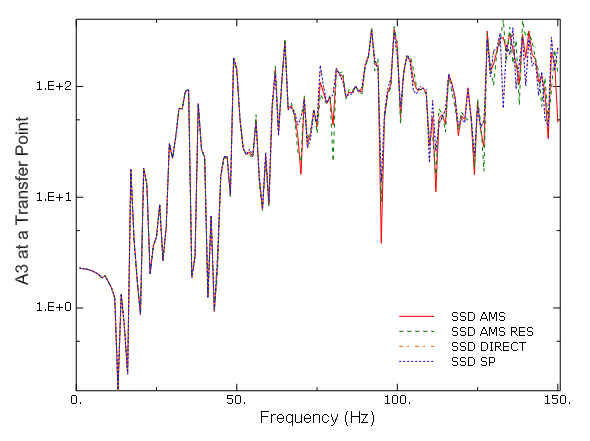Application description
The model shown in Figure 1 was obtained from the National Highway Traffic Safety Administration website (). This model includes material structural damping.
The primary goal of this example is to demonstrate the significant performance improvement of the SIM-based steady-state dynamic analysis procedure using the AMS eigensolver compared to the subspace-based steady-state dynamic analysis procedure. Prior to performing the steady-state dynamic analysis, the undamped eigensolution is computed using the AMS eigensolver. The global cutoff frequency of this model is 300 Hz, so the global eigenmodes below 300 Hz are extracted. During the reduction phase of the AMS eigensolver, all of the substructure eigenmodes below 1500 Hz are extracted and used to calculate the global eigensolution with the default value of 5. In addition, the material structural damping operator is projected onto the global eigenmode subspace.
Geometry
The model consists of the bare metal shell of the frame body including fixed windshields. This model has 127,213 elements and 794,292 active degrees of freedom, and a total of 1107 fasteners are defined to model spot welds in the frame body.
Materials
Linear elastic materials are used for all shell elements, and material structural damping with a value of 0.01 is applied to the materials for the ceiling, floor, hood, and side body of the vehicle. This type of damping results in a full system of modal equations that must be solved for each frequency point.
Boundary conditions and loading
This structure is not constrained, so there are six rigid body modes in the model. Two concentrated loads are applied to the nodes at the two pivot points on the bottom of the vehicle floor to simulate the rolling motion of the vehicle in the steady-state dynamic analysis.



